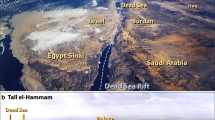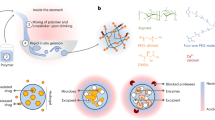Abstract
IT has been proposed that labelling with radio -isotopes might be useful in studying the rate of formation of urinary calculi in experimental animals as a function of environmental conditions. The proposal was based on the fact that in siliceous urinary stones of bovine origin, which contain traces of phosphorus and calcium, diffusion and subsequent exchange of phosphorus-32 and calcium-45 with the non-radioactive counterparts of the stone material do not readily occur across the mucoprotein laminations1. It was felt that if stone formation occurs layer by layer, short-term massive administration of phosphorus-32 to an experimental animal forming a laminated calculus would result in incorporation of the radionuclide into a single or limited number of laminations, and that subsequent exchange into other laminations would be negligible. Further, if administration of phosphorus-32 were then stopped, and exchange from other parts of the body did not cause significant levels of phosphorus-32 in urine, subsequent laminations would be relatively free of label. Therefore periods of exposure to various environmental conditions could be alternated with periods of administration of isotope, and the amount of material deposited between the laminations containing the isotope would serve as a measure of the effect of environment. The results reported here are from preliminary experiments designed to assess certain aspects of the usefulness of this technique in studying calculi formation.
This is a preview of subscription content, access via your institution
Access options
Subscribe to this journal
Receive 51 print issues and online access
$199.00 per year
only $3.90 per issue
Buy this article
- Purchase on Springer Link
- Instant access to full article PDF
Prices may be subject to local taxes which are calculated during checkout
Similar content being viewed by others
References
Keeler, R. F., Amer. J. Vet. Res., 21, 428 (1960).
Vermeulen, C. W., Grove, W. J., Goetz, R., Raggins, H. D., and Correll, N. O., J. Urol., 64, 541 (1950).
Keeler, R. F., and Lovelace, S. A., J. Exp. Med., 109, 601 (1959).
Author information
Authors and Affiliations
Rights and permissions
About this article
Cite this article
KEELER, R., LOVELACE, S. Incorporation of Phosphorus-32 into Urinary Concretions forming on Zinc Implants in Rat Bladders. Nature 191, 715–717 (1961). https://doi.org/10.1038/191715b0
Issue Date:
DOI: https://doi.org/10.1038/191715b0
Comments
By submitting a comment you agree to abide by our Terms and Community Guidelines. If you find something abusive or that does not comply with our terms or guidelines please flag it as inappropriate.



